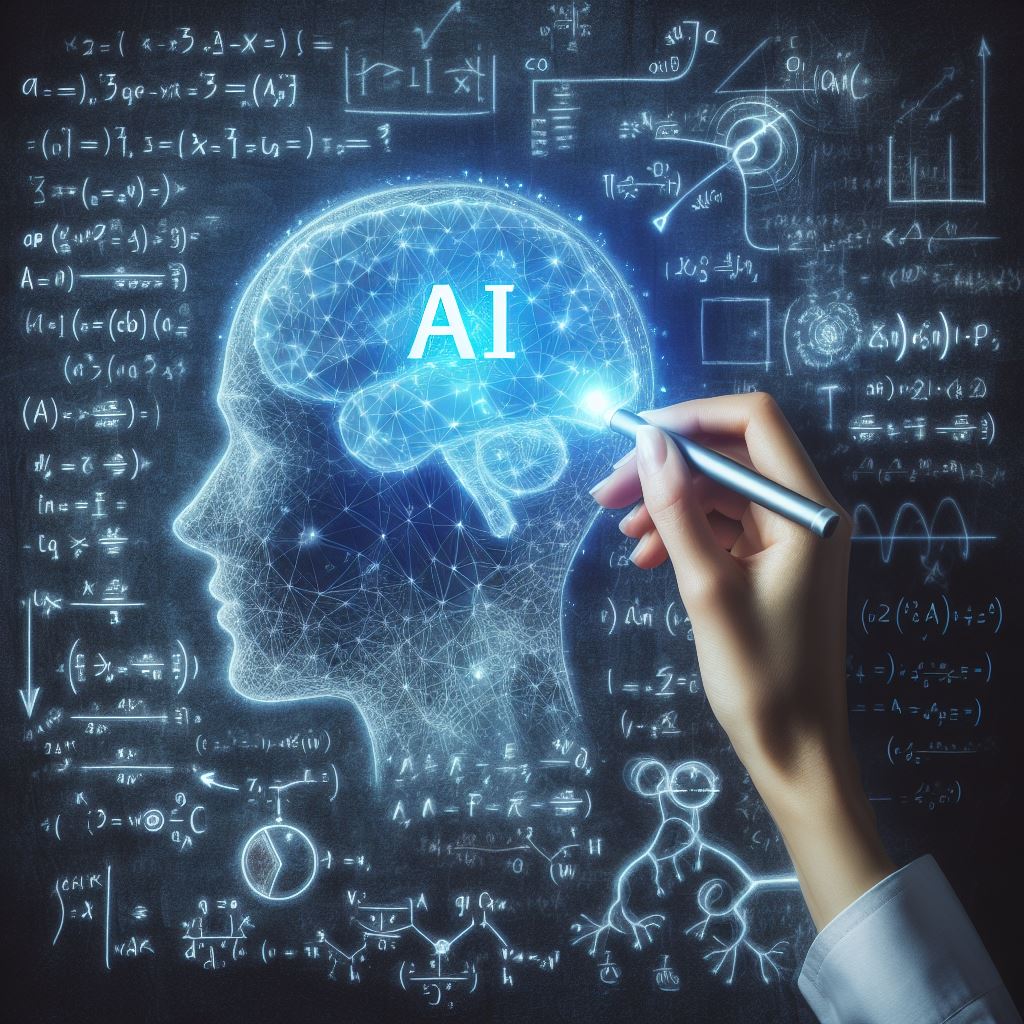In this post, I examine the role of motivation in adopting Open Educational Practices (OEP) by teachers and students. I use the theoretical frameworks of Self-Determination Theory, Attribution Theory, and Goal Orientation in the context of OEP adoption and reflect upon their implications on addressing the challenges related to OEP adoption, such as lack of resources, institutional support, and perceived benefits. Additionally, I examine the potential benefits of Artificial Intelligence (AI) in personalizing learning experiences and providing analytical insights into student performance. I conclude that addressing motivational challenges and incorporating AI-powered tools can enhance the adoption of OEP and create a more inclusive and accessible educational system.
Introduction

The evolution of information and communication technologies has reached a point where educational resources are readily accessible online, anytime, anywhere. This has catalyzed the development of Open Educational Practices (OEP); an embodiment of inclusive and accessible learning through collaborative pedagogy and teaching resources leveraged by participatory technologies. OEP is rooted in Open Educational Resources (OER), defined by UNESCOas learning materials freely available without any access, adaptation, or distribution restrictions. Consequently, OERs are not solely free, but also permit users to revise, remix, reuse, retain, and republish the content. This flexibility has broadened educational access, fostering a more inclusive and collaborative learning approach, enabling individuals to reach their educational ambitions, and encouraging lifelong learning.
Nonetheless, OEP has its challenges. A recent review by Adil et al.. exposed several obstacles faced by OER users. These span from a lack of resources – including insufficient institutional support regarding equipment, skill development, policy formation, usage rights, and time for locating and adapting OERs – to impediments towards widespread usage. Barriers to OEP adoption include issues such as blurring of private and academic life boundaries and contextual collapse, which might also lead to “digital burnout“.

It is now established that extensive exposure to digital tools, constantly keeps the brain in multitasking mode, which creates a constant state of stress results in emotional weariness, a rise in negative emotions, digital deprivation, and decreased professional efficacy. A study by Yung and Du revealed that the primary cause of digital burnout in the educational realm is the lack of emotional regulation–the process of choosing, altering, and expressing emotions. Other contributing factors include lack of competence and concerns of self-efficacy, which stresses emotional regulation and potentially lead to digital burnout. Consequently, these complications discourage teachers and thereby limit the adoption of or observed benefits OEP in terms of improvement in learning achievement, as articulated in recent analysis by Tlili et al.
This aforementioned conclusion constitutes one aspect of many resulting observations. The research identified other influencing factors such as course subject, educational level, and geographic location of learners. For example, OEP application in certain subjects, Asian countries, and in professional development courses has a positive correlation with successful learning outcomes. Therefore, invested and motivated educators can significantly harness OEP to boost their teaching efficacy, while lack of such dedication does not yield the potential OEP benefits. From a student’s perspective, motivation can be assessed using drop-out rates from Massive Open Online Courses (MOOCs), as most MOOCs incorporate OEP principles. Wang et al.‘s study established positive links between retention rates and factors like course design, presentation quality, difficulty level, and learner self-determination. Nonetheless, OERs and MOOCs alike grapple with challenges such as high drop-out rates, reducing utility despite their cost-free nature. Therefore, it is crucial to carefully consider both teacher and student motivation in order to maximize OEP’s potential benefits in education.
Self-determination theory (SDT), attribution theory, and goal orientation theory provide insightful explanations for the lack of motivation observed within some teachers and students. SDT hypothesizes that motivation dips when three fundamental innate needs are unfulfilled: autonomy (the need for choice and control), competence (the need for self-belief in one’s abilities), and relatedness (the need to form and sustain satisfactory relationships with others). The attribution theory suggests that individuals assign their successes or failures to either personal efforts or external circumstances. Feelings of demotivation may arise if they perceive their success or failure as the result of uncontrollable external circumstances. This theory also advances the idea that redirecting attributions of success or failure from external to personal factors can bolster intrinsic motivation. The goal orientation theory postulates that individuals adopt differing learning approaches, including a focus on mastery or performance. A discord between personal goals and the objectives of a task can lead to a lack of motivation to engage in the task.
Teacher motivation
The lack of motivation among teachers to embrace new educational practices such as creating, utilizing and redistributing Open Educational Resources (OERs) and designing and implementing Massive Open Online Courses (MOOCs) poses a substantial barrier to the widespread adoption of open educational practices (OEP). SDT proposes that one’s motivation and personal growth are directly related to how much they are naturally driven to take up tasks without external influences. As such, efforts to encourage teachers to adopt OEP should focus on cultivating their intrinsic motivation. This can be achieved by providing professional development opportunities that evoke their interest and relevance in Open Educational Resources and Massive Open Online Courses. Additionally, showcasing practical examples of successful implementation of these resources can also boost their confidence and ultimately their motivation to adopt these new practices. The immediate challenge is to create a supportive environment that appreciates and fosters curiosity, exploration, and innovation among teachers. Fostering a sense of self-efficacy and competence in embracing new educational practices will be the key to overcoming this barrier.
In attribution theory perspective, teachers may feel demotivated and not willing to adapt to OEP if they view their task’s success or failure is due to external circumstances they cannot control, such as inadequate resources, lack of support from relevant authorities, or insufficient training. To overcome this, there is a need to change their perception of control by providing necessary resources, support, training, and timely feedback. Attribution theory suggests that re-attributing success or failure to internal factors can enhance intrinsic motivation and promote the adoption of new teaching practices. Therefore, it is essential to encourage teachers to perceive their work’s outcome as within their control.

Teachers’ lack of motivation may be due to a misalignment between their goals and OEP’s objectives. For instance, teachers with a performance orientation may not feel motivated to embrace OEP if they perceive it as too time-consuming, require too much effort, or without the promise of immediate benefits or rewards. It is thus essential to align OEP with teachers’ personal and professional goals and show how these practices can enable them to reach their targets. Additionally, providing adequate training, support, and resources to minimize potential barriers could enhance teachers’ motivation to embrace OEP. Therefore, by aligning OEP with specific job responsibilities and career development opportunities, teachers might develop an incentive to integrate OEP into their teaching practices.
In summary, better OEP adoption is only possible if the university management shifts the job descriptions by providing training opportunities to practice using and adopting OERs, and also use these as a metric for promotion.
Student motivation
Self-Determination Theory (SDT) is prominently recognized in academic literature, especially noted by Badali et al. ., as the prevailing explanation for students’ motivation to complete Massive Open Online Courses (MOOCs). In the context of Open Educational Resources (OER)-based courses, the SDT suggests that learners’ determination increases when they hold the autonomy to sculpt their own educational journey. OER-focused courses bolster competency by offering students a variety of avenues to explore, learn, and develop their prior knowledge, although we are still on the verge of witnessing fully personalized courses. Via involvement in open courses, learners can establish connections with their counterparts and field experts through dynamic interaction and collaboration, acting as a robust stimulus incentivizing their thirst to learn and disseminate their knowledge. In this perspective, students’ can be motivated by i.) recognizing and supporting their students’ choices, encouraging self-initiation, and minimizing control; ii.) structuring courses in a way that allows students to progressively gain skills and understanding, and slowly stretching their abilities; and iii.) encouraging interactions and collaborations between learners. On the whole, the SDT framework serves as an insightful perspective for comprehending students’ motivation towards participation in OEP-based coursework.
In Goal Orientation Theory perspective, students may exhibit mastery orientation, with a focus on learning and understanding, or they may display performance orientation, aimed at demonstrating competence relative to others. In OEP-based courses, those with a mastery orientation may find motivation in acquiring new knowledge and skills, hence actively contributing and making regular progress. Meanwhile, performance-oriented students might feel motivated by the opportunity to showcase their skills or compare their learning progress with their peers. However, it is to be noted that performance-oriented students require including collaborative teaching aspects; pure MOOCs might not be suitable for such students.
In summary, OEP is expected to be more successful when it is target toward students that have mastery-orientation and already are driven by autonomy and competence needs, despite the fact that OEP supports collaborative learning options to a great extent (to satisfy relatedness needs). Therefore, an OEP practitioner must take into account that not all students might benefit from OEP, and additional teaching methods must be employed.
Future prospect: role of AI in advancing OEP

The motivation theoretical discussion above can be also enriched by including a future prospect. Artificial Intelligence (AI) has a significant potential in advancing OEP. Firstly, AI can be content-wise (OER) assistant for teachers and offer personalized learning experience for students, by creating or modifying available OER contents. Through machine learning algorithms and predictive analysis, AI can understand a student’s learning style, strengths, weaknesses, and pace, adapting content accordingly. This ensures each learner receives a tailored education experience, enhancing their engagement and, consequentially, their learning outcomes. Secondly, AI can provide analytical insights about student performance to educators. By processing vast amounts of data, AI could help teachers understand students’ learning patterns, potential difficulties, and progress. This information could be used to optimize course materials, improving the overall efficacy of OEP. Thirdly, AI-powered chatbots could support students at any instance, answering their queries and doubts, thereby facilitating constant learning support. Thus, AI can act as a personalized tutor, enabling mentor-mentee type of engagement.
Conclusion
A discussion about motivation can further be enriched by including the future prospect of Artificial Intelligence (AI). Incorporating AI, we can create a future where OEP can revolutionize educational institutions to become more inclusive and accessible. Harnessing AI for content creation or modification can provide personalized learning experiences for students. Additionally, AI can offer analytical insights about student performance to educators, thereby optimizing course materials and improving OEP’s overall efficacy. AI-powered chatbots can also provide 24/7 learning support to students, acting as personalized tutors.

In conclusion, Open Educational Practices (OEP) have immense potential in transforming education to become more inclusive and accessible. However, there are still challenges to be addressed, particularly in motivating teachers to adopt OEP. The theoretical frameworks of Self-Determination Theory, Attribution Theory, and Goal Orientation Theory provide insightful explanations for the lack of motivation among teachers and students. Furthermore, the incorporation of Artificial Intelligence (AI) in OEP presents significant opportunities for personalized learning experiences and analytical insights about student performance. By optimizing OEP through AI-powered tools and incentivizing teachers to embrace these practices, we can create a future where education is available anytime and anywhere for everyone.










